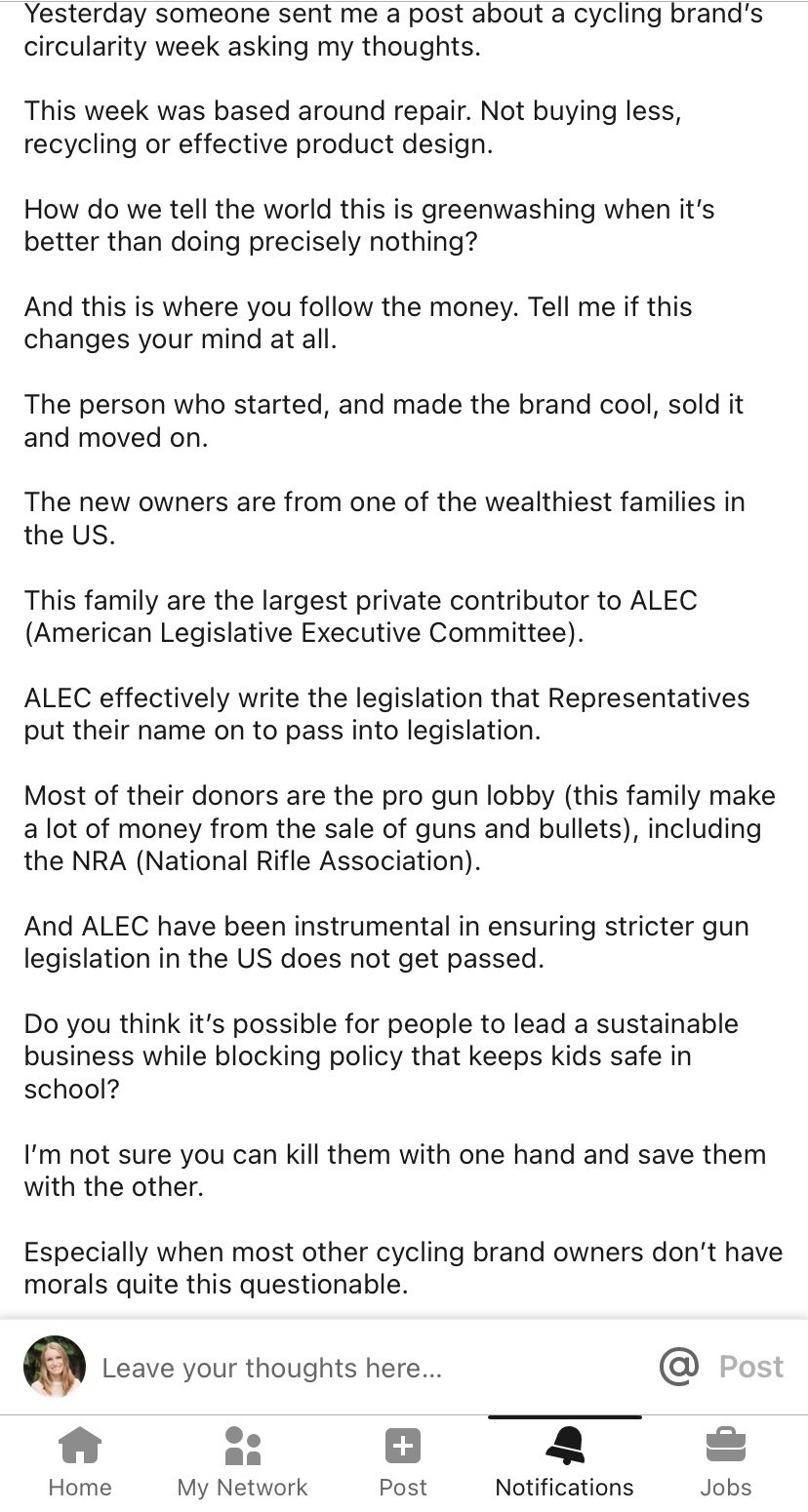Billionaires don’t care if you defend them.
The other week I posted this spicy piece on LinkedIn and it caused A LOT of anger in my comments and DMs (here’s where I need to remind people that if someone tells you to stay out of their DMs, stay out of them. That’s consent 101.).
Two things to know first of all.
Firstly, the brand in this particular instance is irrelevant. There are many of them that all do the same thing, and many that don’t even bother to try this hard. Rather this is a conversation around economic and climate equality when it comes to wealth redistribution.
Secondly, what is the difference between a million and a billion? If we put it into seconds, a million seconds is about 12 days. A billion seconds is 31 years. So that’s the difference between a person, or baby, whose 12 days old, and a person whose 31 years old.
Now while this is not about individuals, there is a difference when it comes to a family that has $1 billion and those, like this particular family in question, who are worth $225.5 billion. Or 6,959.5 years. Which is 2,000 years older than the pyramids FYI. And again, not all billionaires are created the same. Plenty fund organisations to help combat school shootings and push for gun reform. It’s not about singling out people (even though these folks don’t care whether I do or not), it’s about what our money helps to fund after we’ve parted with it.
Now you may argue that buying a mid priced piece of kit is irrelevant to these investors. And to a large extent it is. Although they probably wouldn’t be continuing to purchase quite so many new products if there wasn’t a demand for it. Part of our fight against climate change is to degrow (spell check kept changing this to regrow which feels a little dystopian, and pushed my computer literacy to the limit). Quick check of this brand’s website and that’s a lot of kit soon to be dropped. This isn’t about an even keel of sales, this is sales growth push. The more we spend, the more they buy. It’s a vicious circle we can’t quite get off until the consumers do first.
Image by David Suarez
The other thing to note is that there are a lot of small and medium sized brands, not funded by billionaires, going into this year with a lot of fear about whether they can survive. Brands that do also offer a repair service (although always look out for the wording, the product’s lifetime doesn’t actually mean while you own it, it means how long it’s designed to last for), who have paid their suppliers but not themselves, and who continually work with people like myself to move away from the 90s idea that if we recycle enough we’ll be able to combat climate change. There are brands who, in addition to all this, voluntarily enter into extended producer responsibilities and provide take back services.
These brands can only continue to offer that, and push for the well funded brands to do the same, if they survive and thrive. The world will only change when we force it to.
So yes, repair services are great. But only when it’s combined with EPR, living wages in supply chains, a reduction in units produced, kit made with recycled, recyclable and renewable materials, with zero waste throughout the supply chain and complete transparency.
It is also who profits from that business. Transparency isn’t just for supply chains.
When you spend your dollar you cast your vote.
We won’t always get it right, we’re human after all.
But the sooner we get into the habit of thinking about how we spend our cash as voting for the world we want to live in, the more democratic our economy.


